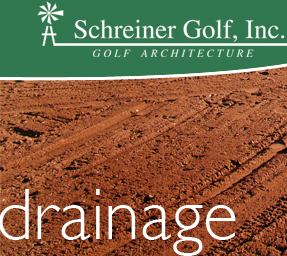Fundamentals are essential to success. Success is mandated by applying the appropriate fundamentals at the proper time. Golf course design is directly related to the influence of gravity. Proper drainage is synonymous with 'waterproof' golf courses. Well drained golf courses play more consistently than courses that are not well drained. Courses that drain well have less disease and pest problems. Courses that shed water efficiently make more money and are more user friendly.
"Tri-Engineering is a way I describe the value of our approach to drainage planning. Drainage will pay at least three ways and it works while you sleep! When the overall system is designed, consideration must be given to on and off-site factors. Major and minor drainage patterns and solutions must be well integrated. Once the design is finished, the system should be installed ASAP because it will begin to dewater a site and to remove storm water immediately. The drainage will also be beneficial to the regulatory permitting process because of how it improves to sediment and erosion control. Next, drainage helps reduce wash-outs during the grow-in process and lastly, the regular maintenance and turfgrass quality is positively enhanced by a completly integrated well engineered drainage system."
"I have instructed over
1,000 golf course superintendents regarding the proper methods of drainage
in a GCSAA Seminar over the last 10 years. Each year at the annual Golf Industry
Show, I spend 2 consecutive days teaching the multiple benefits of drainage
on the golf course."
- Craig Schreiner, ASGCA, ASLA
Renovation of older courses often begins with upgrading and installing
a dependable and sufficiently designed system. The importance of this
is paramount, even indispensable to the success of the golf course. Weather
is not predictable, so the best safeguard for dependability is surface
drainage aesthetically designed to hide it.
The combination of surface and sub-surface drainage will provide the best method of a gravity flow system. On difficult projects where the lack of elevation is a restraint, well engineered sump systems have been very successful. This requires special pump design and detailed elevation calculations to be effective and cost conscious. The pump system pictured below was a challenge to install but the end results have been phenomenal.
The importance of drainage is magnified when it is lacking on a course. Poor quality turfgrass is many times directly associated with standing surface water or high water tables. The ability of soil to dry is as important as it is to receive irrigation water. The superintendent must have surface drainage to consistently produce high quality turfgrass.
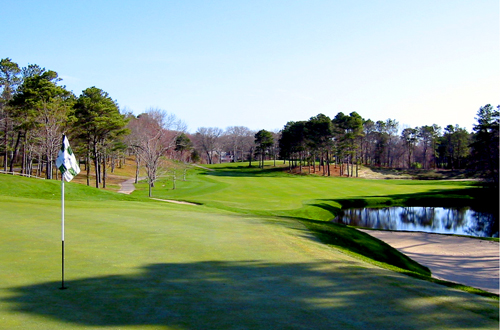 The fairway was raised over four feet
in height to increase surface drainage towards the expanded irrigation
pond.
The fairway was raised over four feet
in height to increase surface drainage towards the expanded irrigation
pond.
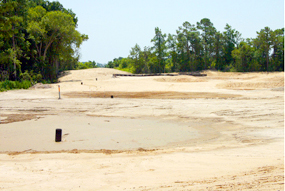 These inlets are temporary silt basins and effectively trap silt and
keep erosion from leaving the site during construction. Once the
grassing begins, the pipe is lowered and teh grate is installed.
The area around the inet is sod.
These inlets are temporary silt basins and effectively trap silt and
keep erosion from leaving the site during construction. Once the
grassing begins, the pipe is lowered and teh grate is installed.
The area around the inet is sod.
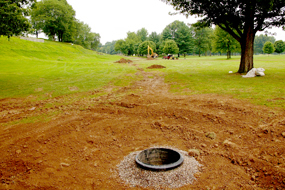
Before
any renovation work begins, the main drainage line is installed to begin
removing water even during the construction phase. The importance of this
is best described as indispensable. Parkersburg CC.
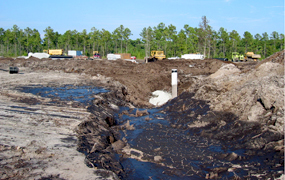 This inlet on the main drainage line is already installed to help de-water
the site during new construction. This added benefit is a result of our
'Tri-Engineered' methodology to golf course design and construction.>
This inlet on the main drainage line is already installed to help de-water
the site during new construction. This added benefit is a result of our
'Tri-Engineered' methodology to golf course design and construction.>
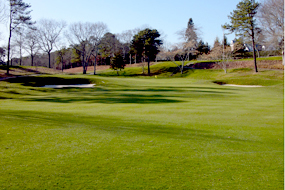 The approach at the 8th hole on the Oyster Harbors Club was the wettest
hole on the golf course. After the sump was installed it has become firm
and beautiful.
The approach at the 8th hole on the Oyster Harbors Club was the wettest
hole on the golf course. After the sump was installed it has become firm
and beautiful.
